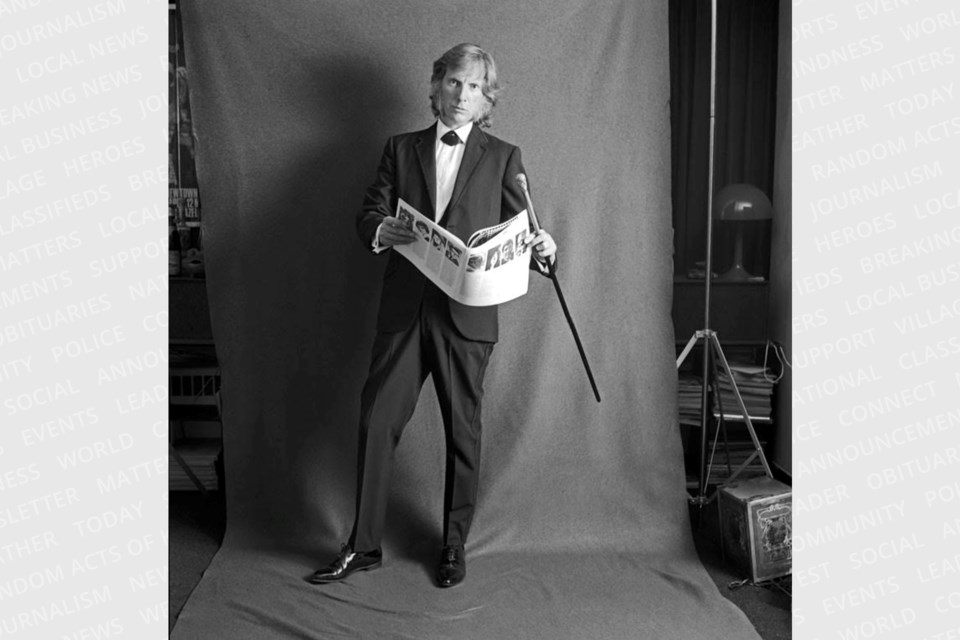More than half my life has been spent in this city which I love.
Looking back retrospectively on my years in Cambridge, many changes have occurred with the growth of the city.
To me a retrospective had always meant an accumulated body of work by a particular artist looking back over a span of years, often their life’s work but it’s more than just art, it can include a collection of memories.
As my thoughts turned to all my accumulated memories, mostly good and positive, with a few hardships, sorrows, and regrets, I was contemplating how fortunate I was to have moved here from Toronto in 1979.
Yesterday when driving on Main Street admiring the Christmas planters the BIA has arranged, I noted a street sweeper wearing a Santa hat and whistling while he worked. A few minutes later I saw a couple riding a Vespa scooter, with a Christmas tree alongside, each with one arm holding the tree securely.
Both made me smile and think of all the varied happenings, experiences and adventures that have taken place in the 43+ years I’ve lived in this community, it brought back memories of another retrospective.
This one, an artist’s retrospective at the Art Gallery of Ontario, was to view the huge variety of a body of work by the renowned Canadian artist Harold Town.
Known as a distinguished, good looking, highly intelligent, controversial, and often irascible man, with a reputation for being “The bad boy of Canadian art.”
Less well known was his penchant for being a classy and elegant dresser who in 1968 was voted the “best dressed Canadian man” of the year by the Toronto Telegram newspaper.
My attention to this was first captured by a magazine cover featuring him wearing a hand stitched wool cloak with a beautifully elegant gold embossed cane laid nonchalantly over his shoulder. I used that photo (now in the Cambridge Archives with Cane & Able paraphernalia) as part of my slide show when speaking to groups.
After several hundred people had seen this, it occurred to me maybe I should have his permission to share it. I wrote to him asking if I might continue to use it as part of my Cane & Able talk about the positive aspect of cane usage. Suggesting that if, as reported he only had four suits in his closet, it was obviously the beautiful cane that had given him the edge to win the award.
To my delight I received a prompt reply, here is a partial quote: “For shame that you dare suggest it was a mere cane that gave me the edge in 1968 best dressed list. It was as can be easily determined my humble ways, palpable panache, extreme beauty, and the fact the bloody suits were designed by me and fully supervised during construction in every detail.”
He continued with descriptions of double lap seams, surgeon’s cuffs and other details ending with a description of the cane: “However, I do find it in my aging heart to forgive you for I understand when one is in the cane biz one leans a little heavy. I hope this has been of some help though I still smart from your terrible assumptions. Cheers H.T."
Thereby began intermittent correspondence between us for several years one of which ended “you will be expected to attend my retro at the AGO on May 16, 1986."
Hence my attending my first art retrospective. It was a huge official event for which I had no invitation, so I called the AGO cheekily informing them I had been personally summoned by the artist and they sent me an official invite.
I had no idea if Harold really expected me to show up, but I looked forward to meeting him in person. Very sadly he was suddenly hospitalized the day before and missed his largest show.
I spent hours wandering around much of the unusual contemporary art and sent Harold a get well soon card and note offering him my opinion of his art and wishing him a fast recovery.
Part of his response was: “What a woman, you rape my letters for gain, reply briefly with a card, and then dare say a visit to the best exhibition in years had some merit. Oh well I guess I should be happy you wished me a speedy recovery. Cheers HT.”
He did not fully recover but moved from this house in Toronto to his farm in Peterborough, so the lunch we had planned never materialized.
Harold Town died from cancer in 1990 at the age of 66, his cane was our connection, and the correspondence was fun and cheeky, and the memory still makes me smile.
As I continue with my own retrospective of Cambridge memories, of the friendships, the adventures, and the learning opportunities I’ve enjoyed, some leading to unexpected experiences, I am very thankful to live in such a caring community.
Of course, we have problems, but not as many as most other places. I hope I have many more years to enjoy living here.



